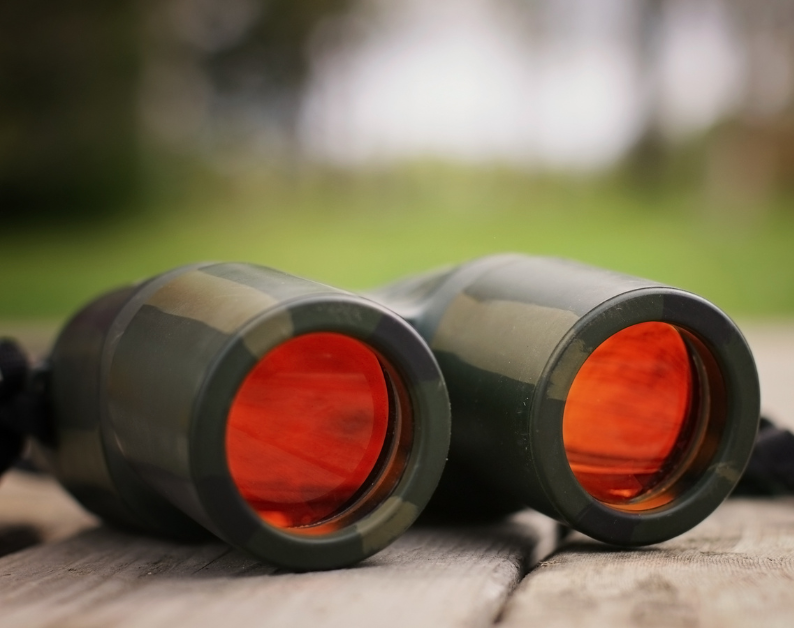Your optics are only as reliable as your ability to maintain them through nature’s harshest conditions. At USA Gun Store, we’ve seen how weather can transform a perfectly clear scope into an expensive paperweight at the worst possible moment.
Whether you’re hunting in Pacific Northwest downpours, dealing with Midwest fog banks, or enduring subzero mountain conditions, understanding optics protection becomes as critical as marksmanship itself.
Understanding Weather’s Impact on Optics
Modern scopes and optics face multiple environmental challenges that can compromise performance. Temperature fluctuations cause internal components to expand and contract, potentially shifting zero and affecting tracking accuracy. Humidity exceeding 60% significantly impacts lens clarity.
Metals contract in cold weather, glass becomes brittle, and rubber seals can expand or contract. Most high-end optics function optimally between 4°F and 122°F.
Combating the Fog Factor
Fogging is the most common weather-related optic failure. Internal fogging indicates seal failure and requires professional attention, while external fogging can be managed with proper techniques.
Temperature differential causes most fogging issues. When warm, moist air contacts cold lens surfaces, condensation forms instantly. Prevention starts with gradual temperature acclimation and avoiding sudden environmental changes.
Use only optics-safe cleaning supplies designed for coated lenses. Anti-fog sprays typically last 24–48 hours.
Cold Weather Challenges
Extreme cold creates issues beyond fogging. Battery-powered red dot sights can lose up to 50% power in subzero conditions. Mechanical components become sluggish as lubricants thicken.
Combat these issues with optics featuring nitrogen purging, weather-resistant seals, and cold-weather-rated lubricants. Lithium batteries outperform alkaline alternatives in extreme cold.
Keep spare batteries warm by storing them in an interior pocket. Hunters often carry backup optics or iron sights for redundancy.
Rain and Moisture Management
Rain affects visibility even with waterproof optics. Water droplets scatter light and blur images.
Primary protection comes from lens caps—flip-up designs balance protection and quick access. Carry a microfiber optics cloth for safe moisture removal.
Carrying position matters. Keep rifles parallel to the ground to prevent water pooling on horizontal surfaces.
Heat and UV Protection
High temperatures can degrade lens coatings, damage reticle illumination, and cause thermal expansion that shifts zero.
Choose heat-resistant optics with UV-protective elements and heat-dissipating designs. Gradual cooling prevents seal failures when moving from intense heat into air-conditioned environments.
Maintenance Protocols for Extreme Conditions
Post-hunt cleaning removes moisture, salt, and debris. Use only optics-grade cleaning kits and clean from the center outward to protect lens coatings.
Dry optics thoroughly after moisture exposure, then store them in a low-humidity safe with silica gel or desiccants.
Inspect for cracks, loose mounts, or changes in clarity after harsh-weather use.
Technology Solutions
Nitrogen and argon purging eliminate internal moisture and prevent fogging. Hydrophobic lens coatings cause water to bead off and improve light transmission.
Pair your optics with quality mounting systems and gun parts made from stainless steel or anodized aluminum for better corrosion resistance.
Building Weather-Ready Optic Systems
Your optic is only as strong as the system it’s mounted to. A precision rifle with a high-quality scope, rugged mounts, and proper shooting accessories is more reliable in extreme conditions.
Carry backups—extra batteries, microfiber cloths, and even a compact red dot or iron sights for emergencies.
Field Emergency Procedures
Despite preparation, field emergencies occur. Knowing rapid solutions for common problems can save hunting opportunities and prevent equipment damage.
For sudden fogging, gentle breathing on lenses sometimes clears minor condensation through warm airflow. This technique works best with external fogging on slightly cold surfaces.
Emergency cleaning requires improvisation with available materials. Clean cotton clothing can substitute for microfiber cloths in emergencies, though avoid rough fabrics that might scratch coatings.
Temperature shock recovery requires patience. Rapid warming rarely helps and often worsens problems. Allow gradual temperature equalization when moving between extreme environments.
Conclusion
Weather will always challenge optical equipment, but understanding these challenges and preparing accordingly ensures your optics perform when it matters most.
The investment in weather-resistant scopes and maintenance gear pays off in reliability and accuracy. Whether you’re tracking game in fog or shooting through heavy rain, prepared optics keep you in the game.
Ready to upgrade your optics for extreme weather performance? Explore USA Gun Store’s scopes, sights, and optics selection and equip yourself with the accessories needed for year-round performance in any environment.
TekMat TEKR17KELPMR3 Kel-Tec PMR-30 Cleaning Mat Gray Rubber 11″x17″ Kel-Tec
TekMat TEKR17KELPMR3 Kel-Tec PMR-30 Cleaning Mat Gray Rubber 11"x17" Kel-Tec PMR-30 Parts Diagram
B&P 12B1SCL8 Sporting Clay 12Gauge 2.75″ 1oz 8Shot 25 Per
B&P 12B1SCL8 Sporting Clay 12Gauge 2.75" 1oz 8Shot 25 Per Box/10 Case


